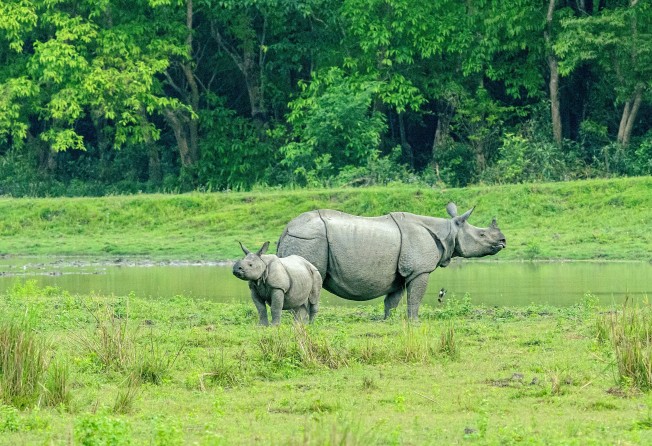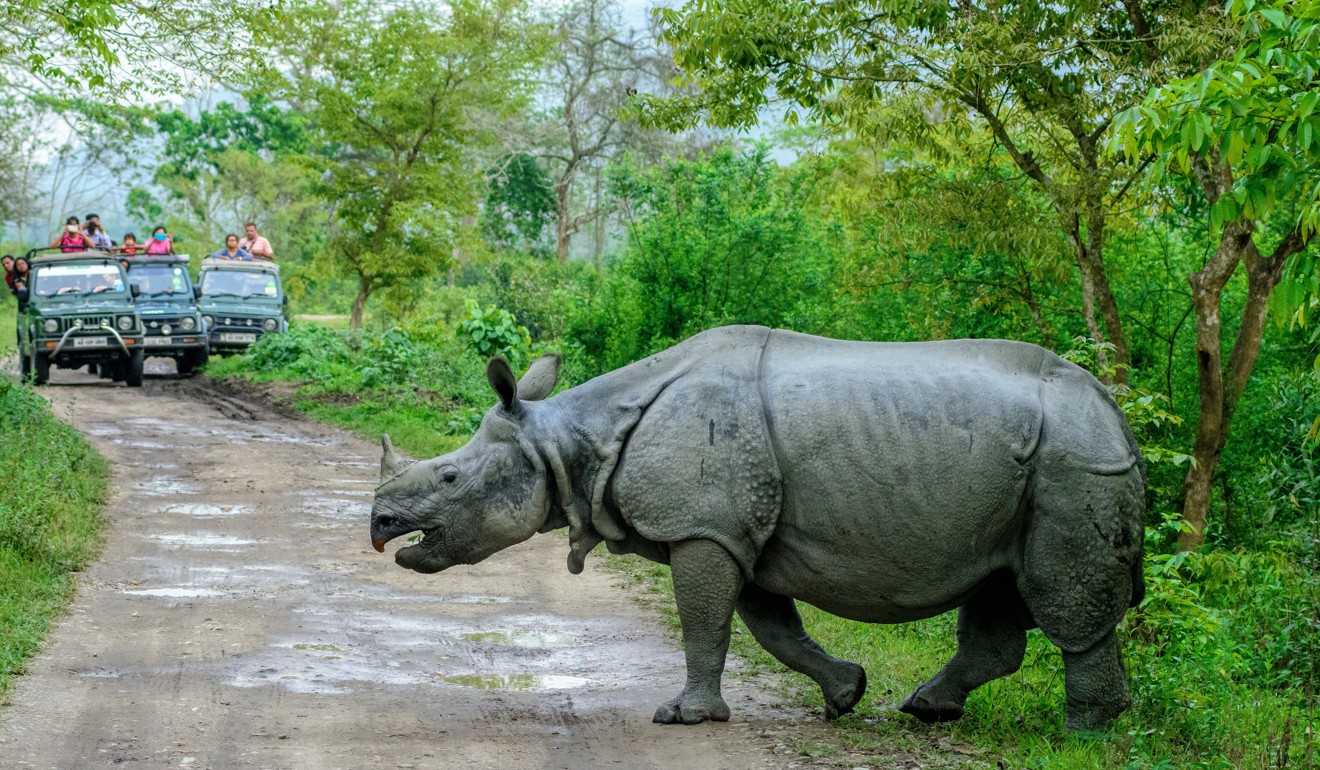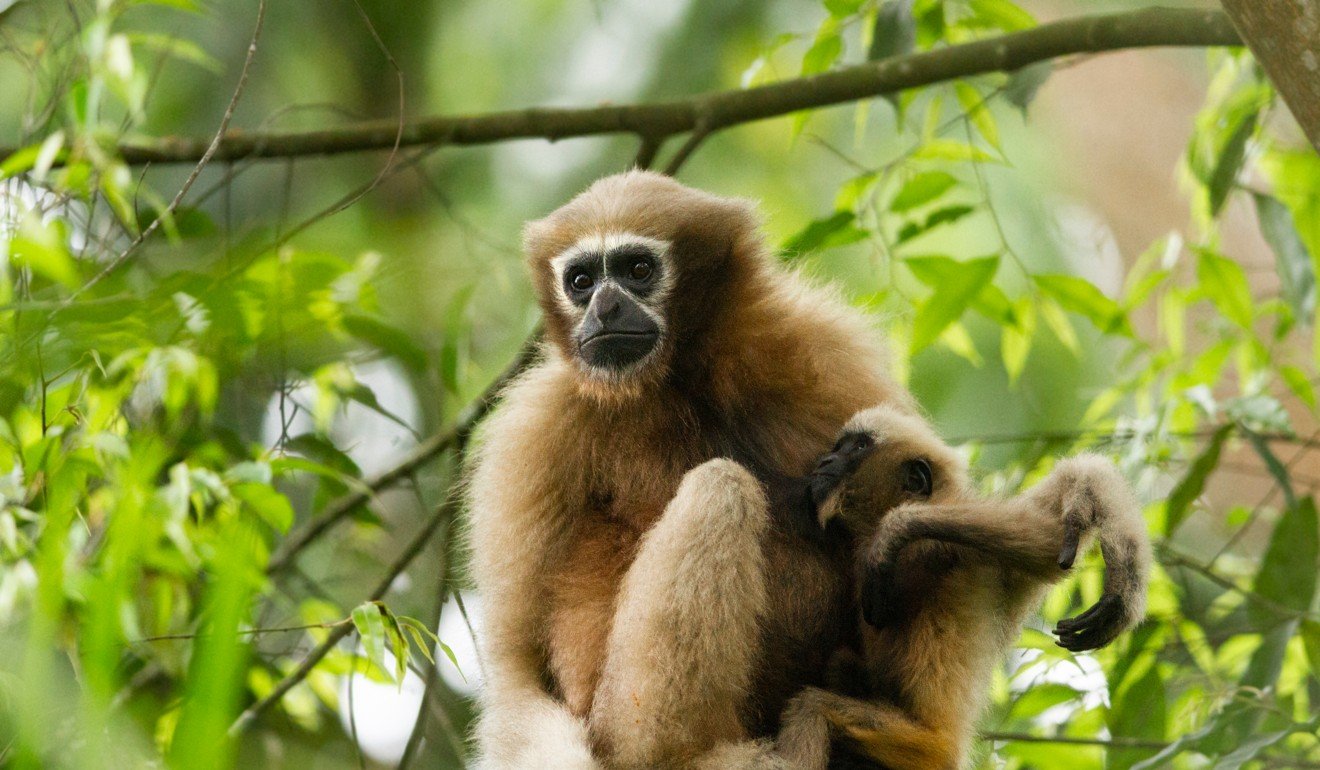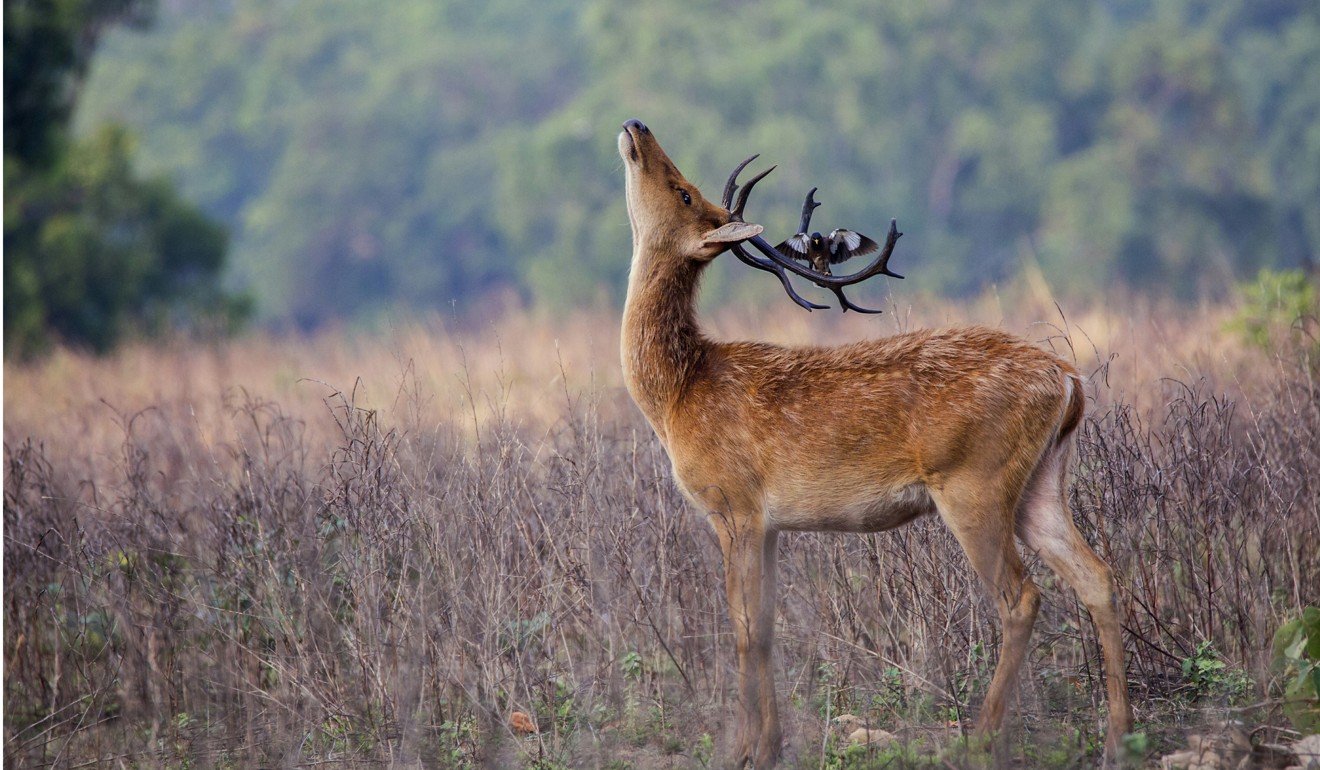
Indian safari: where to see tigers, rhinos, gibbons and swamp deer – tips from conservationists
- India has the most wild tigers and one-horned rhinos in the world, as well as countless other animal and bird species
- Indian conservationists share where to go and how to spot India’s most favourite species

India is home to nearly 75 per cent of the world’s wild tiger population – 2,967, according to a 2018 census, up 33 per cent from 2014.
And while the Bengal tiger tops most wildlife tourists’ wish lists, other fascinating animals, such as the greater one-horned rhinoceros and the barasingha (swamp deer), have survived habitat loss, hunting and poaching, and continue to roam wild, protected in the country’s sanctuaries and national parks.
That they continue to thrive is due in large part to tourism, says wildlife conservationist, naturalist, and expedition leader at Natural Habitat Adventures Aditya Panda.
“Wildlife tourism, when practised ethically, is the most powerful conservation tool. It allows people to watch, appreciate and want to protect our wildlife and natural habitats. It also provides crucial employment to local communities and generates much needed goodwill in favour of conservation, which otherwise usually comes at the cost of major sacrifices by local communities and their livelihoods,” Panda says.

For those who want to enjoy an ethical wildlife holiday in India, Anish Andheria, president of the Wildlife Conservation Trust in India, recommends taking things slowly. “When on a safari, competing with a plethora of tourist vehicles to maximise your own sighting, it is very easy to violate the unsaid rules of ethics,” he says.
Here we highlight some of India’s top animal species to look out for and the best places to see them. Once you get there, the best experience is to enjoy the entire ecosystem.

Greater one-horned rhinoceros: Kaziranga National Park, Assam
Weighing close to 2,000kg, with an armoured body, stubby legs and thick folds of skin, the rhinoceros is an imposing sight. Its most distinctive feature is that which makes it extremely vulnerable in the wild. Poached mercilessly for their horns, only 3,500 or so rhinos are found in the world today, and 2,900 of them live in India’s northeastern state of Assam.
“The best place to watch rhinos is Kaziranga National Park. One has the amazing opportunity to go into the tall elephant grass on the backs of domestic elephants and observe the rhinos and other wildlife from very close without making them nervous,” says Panda.
India is home to more than 80 per cent of the global population of one-horned rhinos. “Today, Kaziranga is the most secure rhino habitat in India. In spite of the poaching pressure on the rhino, India has been able to successfully stabilise its population within the state of Assam,” says Andheria.
Getting there: fly to Guwahati and drive five hours to reach Kaziranga National Park.
When to go: The park is open from November to April. Sightings are good throughout these months, but March and April are the best months.

Hoolock gibbons: Hollongapar Gibbon Sanctuary, Assam
The endangered Western hoolock gibbon is the star attraction at the Hollongapar Gibbon Sanctuary. The 21 square kilometre patch of forest offers visitors the chance to walk in the wild, unlike many other forest reserves in India, where tourists are restricted to jeep safaris.
An unbroken canopy is essential to a gibbon’s movement – and survival, as they are increasingly confined to smaller patches of forest. “Hoolock gibbons are synonymous with old growth forests and their numbers have fallen rapidly over the past two decades, as these forests get fragmented and depleted” says Andheria. “By trying to look for gibbons, tourists will be introduced to their plight and hopefully help catalyse efforts to conserve their habitat.”
Today, the Hollongapar sanctuary is home to one of the densest populations of the ape – around 80 individuals. Conservation measures are in place: checking fuel wood collection, the planting of native food trees, community involvement including awareness programmes and developing alternative sources of livelihood.
Getting there: fly to Jorhat and drive for an hour to reach the sanctuary
When to go: The sanctuary is open through the year. October to March is the best season to visit.

Barasingha: Kanha National Park, Madhya Pradesh
During safari season, open-top jeeps rumble through the grasslands and dense forests of Kanha National Park. With plateaus, meandering streams, and swathes of bamboo, Kanha is among India’s most popular tiger reserves for its range of landscapes and variety of animal life, including the Indian bison, sloth bear and wild boar. The striped cat is the apex predator here, but the unsung star of this forest is undoubtedly the handsome swamp deer, barasingha. The is the state animal of Madhya Pradesh, and also a conservation success story.
Endemic to Central India, the species is easily recognisable, with magnificent 12-pronged antlers. The barasingha is named for its characteristic horns. In Hindi, barah translates to twelve, while singha means antlers.
Once abundant across Central and Eastern India, the barasingha was hunted recklessly and a victim of poaching. Coupled with the destruction of their grassland habitat, the population of swamp deer fell from around 3,000 to less than 100 in just 30 years. In the late 1960s, there were fewer than 70 barasingha left in the wilds of Central India.
In the 1970s, Project Tiger was launched to protect the apex predator by adopting an umbrella approach of total environmental protection. “It is impossible to save the tiger without first saving everything else down the food chain,” says Panda. Villages in the forest’s core area were relocated, reviving the native grasslands central to the existence of the barasingha.
Today, more than 800 barasingha roam wild and free in Kanha. They are commonly seen in their favourite habitat, Kanha’s meadows, and look especially resplendent at golden hour, when the late afternoon sun falls on their honey-coloured coats.
Getting there: fly to Jabalpur and drive four hours to reach Kanha
When to go: The park is open from October to July. Sightings are best in the summer months from March to May.

Bengal tiger: Pench Tiger Reserve, Madhya Pradesh
“The species that undoubtedly defines India’s top conservation success would be the tiger,” says Andheria, of the Wildlife Conservation Trust.
With over 500 tigers, Madhya Pradesh’s national parks and sanctuaries are home to the largest population of the big cats in the country. Pench National Park, a thriving teak forest in the Seoni district, was the inspiration for The Jungle Book. The elusive tiger roams in the rocky outcrops and high riverbanks, on low hills and meadows. Pench’s star resident is a tiger named Collarwali, a female who has birthed nearly 30 cubs in eight litters.
The best way to spot these majestic cats is on jeep safaris with trained forest guides. Speed limits within the park are regulated, and the forest department hires from local communities, most of whom live on the fringe of the forest. Sharing space with the jungle’s residents, these expert guides act as eyes and ears, decoding the workings of the forest in the most fascinating ways.
“Wait patiently near streams, water bodies and at interfaces between grassland and woodland to pick up indirect evidence such as alarm calls or tiger calls. This will increase your chances of seeing wildlife,” says Andheria. “The belief that tiger sightings are directly proportional to the number of kilometres traversed is absolutely unsubstantiated. In rushing for tigers you will miss out on several other timid species and the overall jungle experience.”
Getting there: fly to Nagpur and drive for two hours to reach Pench.
When to go: The park is open from October to July. The best time for sightings is during the hotter months, from March to May.